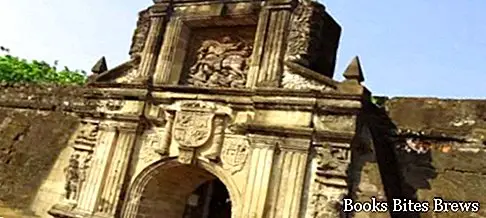What to see in Manila, neighborhoods, itinerary including the main monuments and places of interest to visit, including Intramuros, Ayala Museum, Makati shopping center and neighborhoods.
Tourist information
In Manila, the joie de vivre does not radiate from cultural heritage or symbolic reference points, but from the continuous pulsing of the energy of the inhabitants who are very helpful and sociable with tourists.
At first glance Manila is a chaotic city, due to the large motor traffic on its streets, which winds its way between dilapidated concrete buildings and skyscrapers.
To understand this, one must first keep in mind that Manila is a confederation of seventeen different neighborhoods and, to get a realistic idea of the whole, one must visit the various parts that make it up.
What see
History buffs will experience the ghosts of Manila's turbulent Spanish past inside the walls of Intramuros, dating back to the 16th century.
Shoppers can visit Makati's trendy malls, while foodies will enjoy dim sum under the Chinatown sky.
The Ayala Museum is famous for its 3D miniatures, depicting the vital points in the history of the Philippines.
On the fourth floor there are permanent and spectacular exhibitions, the most beautiful of which is that of ancestor gold, a glittering set of gold artifacts and treasures from the pre-colonial era, including finely engraved jewels from the island's indigenous tribes .
Noteworthy is the exhibition of Filipino embroidered clothes.
Chinatown is a neighborhood with food stalls, markets, 1608 Santa Cruz Church, and two main streets, Ongpin and Esmina.
The Chinese Cemetery, founded in 1850, was designated as a resting place for Chinese citizens who refused burial in Catholic cemeteries.
Recommended readings- Manila: what to see in the capital of the Philippines
- Palawan: what to see on the island of the Philippines
- Philippines: useful information
This Campo Santo has a number of particular tombs, including some equipped with air conditioning, rooms for the bathroom, toilets, chandeliers and other modern conveniences.
On November 1st, on the occasion of the feast of All Saints, sumptuous festivals are held here.
Fort Santiago is one of the oldest colonial buildings in the Philippines, built around 1571 for defensive purposes, to protect the entrance to the Pasig River.
His most famous prisoner was the national hero José Rizal, who spent his last days here before the execution, which took place in 1896 by the Spaniards.
At the height of the architectural grandeur of this fort, is the door decorated with motifs of St James, the hunter of Mori, dating back to 1589.
The Japanese used it to defend themselves from the attack by American forces, so the building was partially damaged.
Intramuros is a charming old fortified colonial neighborhood, founded in 1571 by the Spanish on the southern bank of the Pasig River.
It was devastated 400 years after the battle between the Japanese and the Americans in 1945, in which more than 100,000 inhabitants died.
Faithfully restored after the war, it includes streets, squares, churches and monasteries.
Carriage rides can be easily organized to breathe in the still alive atmosphere of the past.
The Philippine National Museum houses important works of art by Filipino masters, including those of the painter Juan Luna who lived in the nineteenth century.
The National Museum of Historical Finds preserves the wreck of San Diego, a Spanish galleon that sank in Philippine waters in 1600.
Oceanario is a wonderful aquarium where it is possible to admire the natural habitats of many species of fish, reproduced very faithfully, along an underwater tunnel of 25 meters in length.
Rizal Park, a park also known locally as Luneta, covers 58 hectares and represents one of the main green lungs of Manila.
The park is named after José Rizal, remembered by an imposing memorial-style obelisk.
In the green area there are several themed gardens, a planetarium and an orchidarium, equipped with a butterfly-shaped pavilion.
The park is used for picnics, people watching and jogging, and occasional free public concerts are also hosted in the outdoor auditorium.
The Church Museum of Saint Augustine is a splendid Baroque church dating back to 1587, which constitutes one of the oldest buildings in the Philippines.
Miraculously surviving the war devastation, it is today the most representative moment of Intramuros in Manila.
Trompe l'oeil and murals decorate its interior, the small museum of the adjacent monastery contains some valuable ecclesiastical artifacts, including splendid altarpieces.
Do not miss the garden of Padre Blanco.
SM Mall of Asia is a grand mall, the largest in the country, which leaves visitors stunned.
In addition to the myriad of shops, it boasts Asia's largest Imax screen, an Olympic skating rink, 10 bowling alleys and a science museum.
From the sunny terrace you can enjoy a fabulous panoramic view of the bay of Manila.




